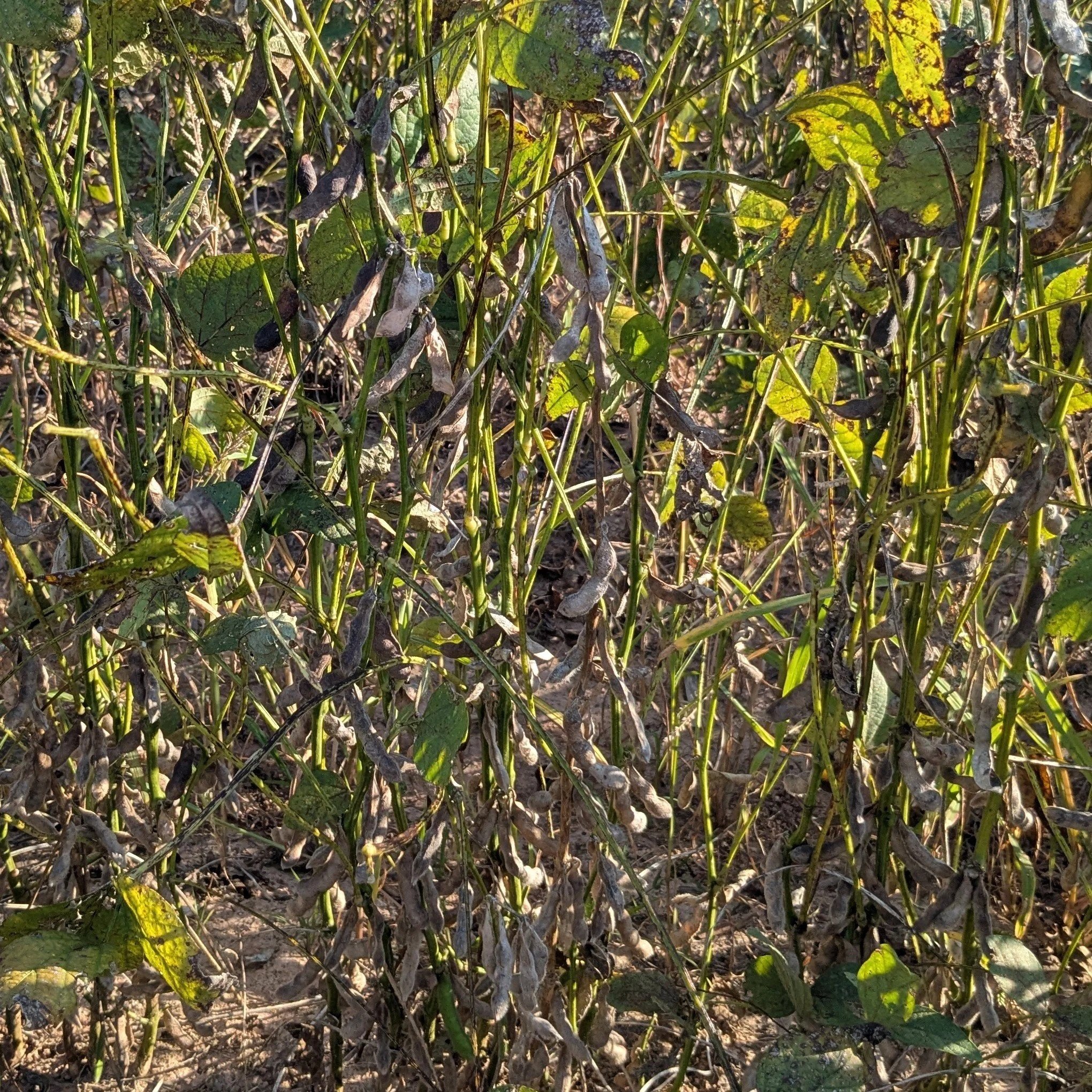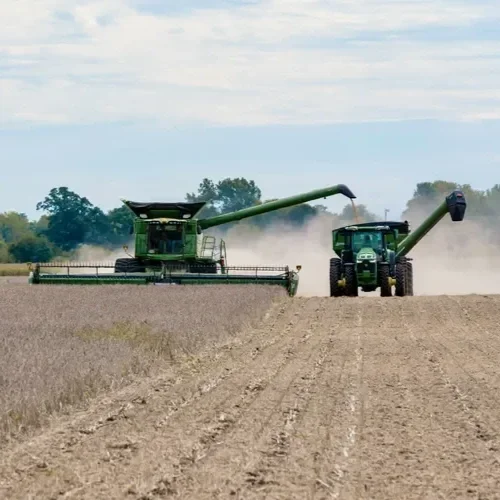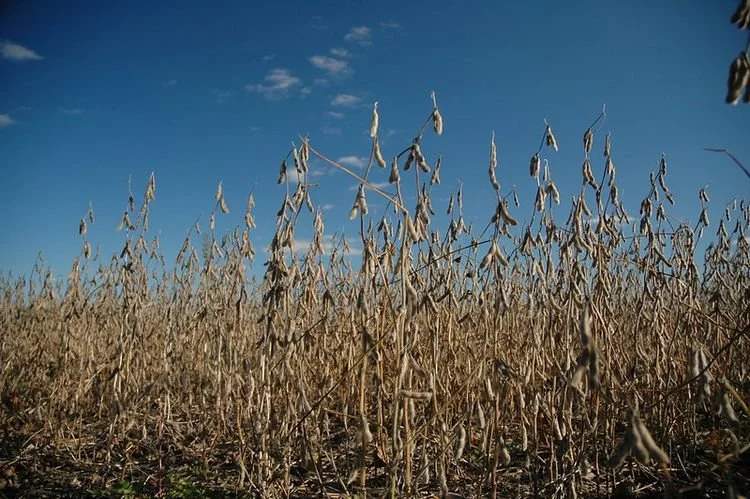Old crop corn stocks on hand as of Sept. 1, 2025, totaled 1.53 billion bushels, down 13% from Sept. 1, 2024, according to the U.S. Department of Agriculture’s National Agricultural Statistics Service (NASS) Grain Stocks report released today. Old crop soybeans stored in all positions were down 8% from Sept. 1, 2024, and all wheat stocks were up 6% from a year earlier.
Read MoreAccording to USDA, as of last Sunday, 96 percent of the Louisiana soybean crop was coloring, 93 percent dropping leaves, 88 percent mature and 78 percent has now been harvested. The bean crop is reported at two percent excellent, 20 percent fair and 78 percent good.
Read MoreChinese importers kept up a hectic pace of Argentine soybean purchases after the South American supplier's move to abolish export taxes temporarily made its prices competitive, traders said on Wednesday.
Read MoreThere have been several cases of green stem reported in mature (R8) soybean fields. A Science for Success factsheet (Understanding Green Stem in Soybeans) explains that green stem is a disorder where the stems of a soybean plant stay green after the pods have fully matured. The exact cause of green stem is unknown. However, it is generally associated with any factor that reduces pod and seed development. This is because the developing seeds are the "sinks" that draw nutrients from the plant's "sources" like the leaves and stems.
Read MoreIn the USDA Crop Progress report released on Sept. 15, 11 states reported soybean harvest. Harvest progress across those states was 5%, which is 2 percentage points ahead of the five-year average. Here’s a closer look at the states reporting soybean harvest.
Read MoreFor the first time since at least the 1990s, China hasn’t bought any U.S. soybeans at the start of the export season, a sign that Beijing is once again using agriculture as leverage in its trade fight with Washington.
Read MoreLouisiana has the most soybeans harvested, with the USDA reporting 63% completed. That’s 13 percentage points ahead of the prior week. At this time last year, 45% of soybeans were harvested. The five-year average is 47%.
The USDA reported that Louisiana soybean condition was rated 0% very poor, 0% poor, 20% fair, 78% good, and 2% excellent.
Read MoreCorn production is up, while soybean and cotton production is down from 2024, according to the Crop Production report issued by USDA’s National Agricultural Statistics Service (NASS). Corn production is up 13% from last year, forecast at 16.8 billion bushels; soybean growers are expected to decrease their production 2% from 2024, forecast at 4.30 billion bushels; cotton production is down 8% from 2024 at 13.2 million 480-pound bales.
Read MoreThis month’s 2025/26 U.S. corn outlook indicates greater supplies, larger exports, and a slight reduction in ending stocks. Projected beginning stocks for 2025/26 are 20 million bushels higher based on a lower use forecast for 2024/25, with reductions in imports and corn used for ethanol partially offset by an increase in exports. Corn production for 2025/26 is forecast at 16.8 billion bushels, up 72 million from last month as a 2.1-bushel reduction in yield to 186.7 bushels per acre is more than offset by a 1.3 million acre increase in harvested area to 90.0 million acres.
Read MoreThe USDA reported the most recent condition ratings for corn and soybeans earlier this week. There are clear “winners” — states with the highest rated crops — and “losers” — states with the lowest rated crops.
Read more about which states came out on top, and which are trending the wrong way just before harvest.
Read MoreThe U.S. soybean crop seems to be getting smaller. Drier weather has set in across much of the Midwest, which could taper soybean yields. Disease pressure is also starting to mount. But even with the potential for the soybean crop estimates to shrink, analysts warn without China coming to the table, soybean prices could be stuck in this low price pattern.
Read MoreThis report projects corn, soybeans, wheat, and rice futures prices for the United States for the third quarter (Q3) of 2025. Our analysis utilizes historical data on both cash prices (the price for immediate delivery) and futures prices (the price agreed upon for delivery at a future date).
We aggregate the daily futures prices into quarterly averages to simplify our analysis. Using this dataset, we train several machine learning models to predict futures prices for all four commodities.
Read MoreAn ag economist says the increased trade tensions between the U.S. and China are starting to negatively impact soybean prices.
Read MoreIn the USDA Crop Progress report released on Aug. 25, 12 states reported soybeans dropping leaves. Here’s a closer look at the 12 states that reported for that crop growth stage.
Read MoreThe American Soybean Association is urging President Trump to prioritize soybeans in U.S.-China trade talks, warning that retaliatory tariffs are shutting American farmers out of their largest export market going into the 2025 soybean harvest.
In a letter sent to the White House, the group called for the removal of Chinese tariffs on U.S. soybeans and commitments for future purchases. ASA also released a white paper outlining the financial consequences of losing long-term market share in China.
Read More













